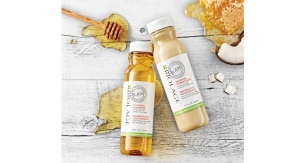01.30.17
With some groundbreaking deals at the end of 2016—take the Estée Lauder Companies’ nearly $1.5 billion purchase of Too Faced Cosmetics, for example (see story below)—mergers and acquisitions seem to have become a key growth strategy in Beauty. Already this month, we’ve seen M&A action from L’Oréal and Coty.
A report on the industry by A.T. Kearney says the survival of both large and small firms depends on making strategically smart acquisitions or being acquired. Kearney notes that factors driving this rise in inorganic growth are stagnant or slow growth in core markets and the highly concentrated nature of the industry; in both the mass and premium segments, the top three players account for 39% and 49% share, respectively.
A.T. Kearney’s Merger End Game methodology, which is based on the analysis of hundreds of mergers across industries, suggests that an industry is approaching a “tipping point” when the top three companies in the industry have a combined share of 45% or more. The beauty and personal care (BPC) industry has reached this point.
Hana Ben-Shabat, A.T. Kearney partner and co-author of the report, stated, “Our analysis shows that large-sized corporations in the BPC industry cannot afford to be inactive in the acquisition game if they want to succeed.”
The report provides case studies and insights on the four key drivers of M&A in the BPC sector: access to consumers; access to innovation; access to channels; access to markets.
The analysis also shows that companies in this sector that make acquisitions frequently (more than two per year) have an enterprise value growth rate that is 26% higher than companies that had a lower level of transactions during the same time period.
More info: www.atkearney.com/consumer-products-retail
A report on the industry by A.T. Kearney says the survival of both large and small firms depends on making strategically smart acquisitions or being acquired. Kearney notes that factors driving this rise in inorganic growth are stagnant or slow growth in core markets and the highly concentrated nature of the industry; in both the mass and premium segments, the top three players account for 39% and 49% share, respectively.
A.T. Kearney’s Merger End Game methodology, which is based on the analysis of hundreds of mergers across industries, suggests that an industry is approaching a “tipping point” when the top three companies in the industry have a combined share of 45% or more. The beauty and personal care (BPC) industry has reached this point.
Hana Ben-Shabat, A.T. Kearney partner and co-author of the report, stated, “Our analysis shows that large-sized corporations in the BPC industry cannot afford to be inactive in the acquisition game if they want to succeed.”
The report provides case studies and insights on the four key drivers of M&A in the BPC sector: access to consumers; access to innovation; access to channels; access to markets.
The analysis also shows that companies in this sector that make acquisitions frequently (more than two per year) have an enterprise value growth rate that is 26% higher than companies that had a lower level of transactions during the same time period.
More info: www.atkearney.com/consumer-products-retail


























